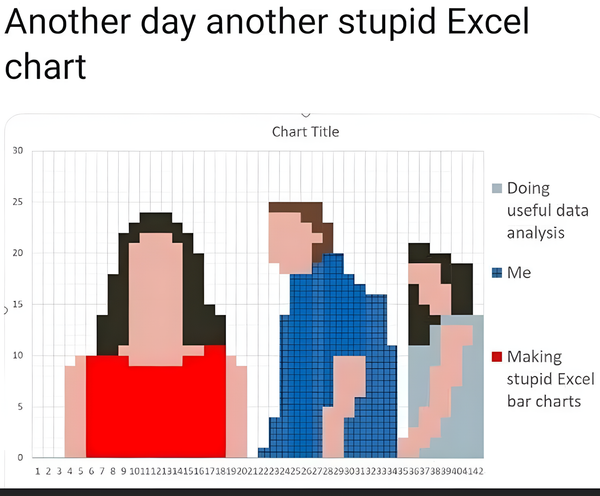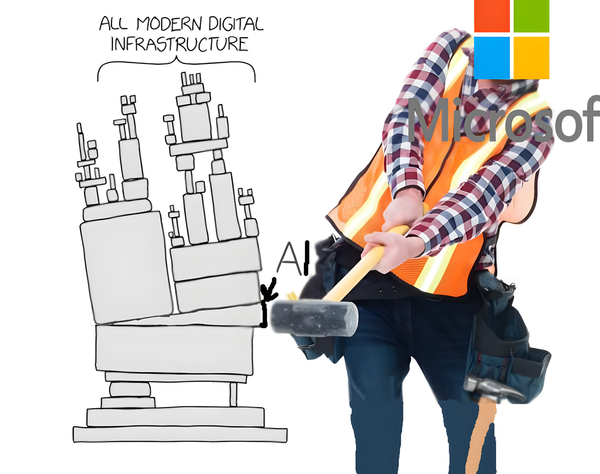The Managers' Guide #118
Master modern engineering. Understand why LLMs are a "blurry JPEG of the web," how to build cost-effective architectures (FinOps), and why documents are a manager's most powerful tool for scale.

Overheard: “Everyone has a testing environment. Some people are lucky enough to have a totally separate production environment.”
Esther Schindler
Software Architecture and Design Trends Report - 2025
- 🤖 AI is Reshaping Everything — Generative AI and Large Language Models (LLMs) are the most dominant force, moving from novelty to a core architectural component. Architects are now building “AI-native” systems using patterns like Retrieval-Augmented Generation (RAG) and leveraging AI-assisted development tools to boost their own productivity.
- 🏗️ Platform Engineering Goes Mainstream — The focus on developer experience (DevEx) is driving the adoption of Internal Developer Platforms (IDPs). The goal is to reduce cognitive load on developers by providing curated “paved paths” — a standardized set of tools and workflows that accelerate delivery.
- 🧑🤝🧑 Sociotechnical Thinking is Key — The idea that your team structure and software architecture are deeply connected is now widely accepted. Frameworks like Team Topologies are in the “Early Majority”, guiding organizations to align their teams with the software they build to reduce friction and improve flow.
- ⚖️ Pragmatism Over Dogma — The pendulum is swinging away from a “microservices-first” approach. Architects are increasingly favoring a “well-structured monolith” or “modulith” as a starting point, only extracting services when a clear business or scalability need arises. The focus is on evolutionary architecture, not a big-bang rewrite.
- 💸 FinOps Becomes an Architect’s Job — As cloud bills grow, cost is now a critical non-functional requirement. Architects are expected to design for cost-efficiency from the start, a practice known as FinOps. This involves making conscious trade-offs between performance, resilience, and operational expense.
Useful engineering management artifacts
- 🛠️ Management by Document — The core idea is that engineering managers can gain massive leverage by creating and maintaining key documents, or “artifacts”. These aren't bureaucratic chores; they are tools that allow a manager to communicate vision, process, and expectations at scale, freeing them up from repeating themselves in endless meetings.
- 📜 A Manager’s Toolkit — The article lists several crucial artifacts that form the foundation of a well-run team. These include a clear Team Mission (the “why”), a Roadmap (the “what”), Onboarding Docs (to ramp up new hires), and a Career Ladder (to show paths for growth).
- 🤔 Proactively Answer Questions — These artifacts serve to proactively answer the most common questions a team has: “What is our purpose?”, “What should I work on next?”, “How do we do things here?”, and “How can I advance my career?”. Providing this clarity empowers team members and reduces ambiguity.
- ✨ From Chore to Opportunity — The author reframes documentation from a tedious task into a high-leverage opportunity. A single, well-written document like an Architecture Decision Record (ADR) or a Production Readiness Checklist can save hundreds of hours of future debate, mistakes, and confusion.
On (Workplace) Politics
- 🤝 Politics Isn't a Dirty Word — The article argues that politics are an unavoidable and natural part of any organization because they are simply “the process of making decisions that apply to members of a group”. The goal isn't to eliminate politics, but to foster the “good” kind (alignment, influence) over the “bad” kind (manipulation, backstabbing).
- ✨ Influence Trumps Authority — Your formal title gives you authority, but real power comes from influence. This is built on a foundation of trust, expertise, and strong relationships. To be effective, you must learn to persuade and align people who don't report to you.
- 🗺️ Map the Landscape — To navigate politics successfully, you must first understand the terrain. This involves identifying key stakeholders, understanding their motivations and incentives, and mapping the informal social networks. Knowing “who trusts whom” is often more important than the official org chart.
- 🏦 Proactively Build Social Capital — The most crucial skill is building relationships before you need them. By investing time in getting to know colleagues and helping them succeed, you build a reservoir of goodwill and trust, or “social capital”, that makes collaboration and alignment much easier down the road.
My new(sletter) is aliiiive! Short, sharp technical explainers delivered weekly. From protocols to AI, we make complex ideas click.
Seeing like an LLM
- 🗺️ The World Through a Grid — The article draws a powerful analogy to James C. Scott’s book Seeing Like a State. Just as a state simplifies messy reality with maps and standardized names to make it governable, a Large Language Model (LLM) makes the world “legible” to itself by simplifying it into a statistical grid of tokens. It doesn’t understand reality; it processes a simplified representation of it.
- 🧩 Tokenization is a Lossy Filter — The core mechanism for this simplification is tokenization. The LLM breaks down the rich, continuous flow of human language and ideas into discrete, mathematical units (tokens). This process is inherently lossy, stripping away context, nuance, and intent, leaving only statistical relationships — creating what’s famously been called a “blurry JPEG of the web”.
- 👻 Hallucinations are a Feature, Not a Bug — An LLM’s “hallucinations” are a direct consequence of its worldview. They happen when its simplified, statistical model of the world fails to align with the complexities of reality. The model isn’t lying; it’s just generating what is statistically plausible within its limited, token-based grid, regardless of factual truth.
- 🧑💻 Our New Job is "Translator" — In this new world, humans become essential mediators. Our job is to translate our complex, messy, real-world intentions into the simplified, “legible” language of prompts that the LLM can process. We then must take its statistically-generated output and interpret it back into a useful, real-world context.
A bag of worries
- 💼 The "Bag of Worries" Metaphor — The central idea is to visualize putting all your professional anxieties and concerns into a single “bag”. This act of externalizing them stops them from constantly swirling in your head, reducing cognitive load and providing a sense of control.
- ⚖️ Triage Your Concerns — Once your worries are collected, the next step is to sort them into three distinct buckets:
- Things you can't control (and must learn to let go of).
- Things you can influence but should delegate.
- Things you personally own and must act upon.
- ✅ Convert Anxiety into Action — The ultimate goal is to transform the vague worries you do own into specific, concrete next steps. Instead of “I’m worried about the project deadline,” it becomes “I will schedule a check-in with the team to de-risk the timeline.” This turns passive anxiety into proactive management.
- 🧑🤝🧑 A Powerful Coaching Tool — The metaphor isn’t just for personal use. Asking a direct report, “What’s in your bag of worries?” can be an empathetic and effective way to open up a coaching conversation, uncover hidden risks, and help them manage their own stress.
That’s all for this week’s edition
I hope you liked it, and you’ve learned something — if you did, don’t forget to give a thumbs-up, add your thoughts as comments, and share this issue with your friends and network.
See you all next week 👋
Oh, and if someone forwarded this email to you, sign up if you found it useful 👇



